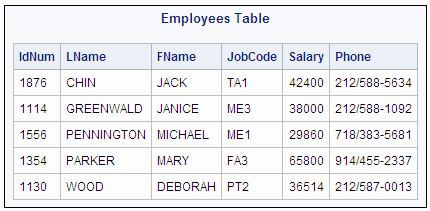Learn how to create, query, and manage databases with SQL. The ANY operator returns true if any of the subquery values meet the condition. APPLIES TO: SQL Server Azure SQL Database Azure Synapse Analytics (SQL DW) Parallel Data Warehouse. Compares a scalar value with a single-column set of values.

SOME and ANY are equivalent. Transact-SQL Syntax Conventions. Summary: in this tutorial, you will learn about the SQL ANY operator and how to use it to compare a value with a set of values. Introduction to the SQL ANY operator.
SQL ANY operator compares a value to each value in a list or from a query and evaluates to true if the result of an inner query contains at least one row. ANY returns true if any of the subquery values meet the condition. They return boolean value as a result. ANY and ALL keywords are used with a WHERE or HAVING clause.
It is also used to compare a value to every value in another value set or result from a subquery. ALL operator is used to select all tuples of SELECT STATEMENT. The menu to the right displays the database, and will reflect any changes. Feel free to experiment with any SQL statement. You can restore the database at any time.
IN vs ANY operator in PostgreSQL - Stack. Difference between in and any operators in sql. Home Articles Misc Here. Any cookies that may not be particularly necessary for the website to function and is used specifically to collect user. In sql, Any operator is used to return a values which matches with any value in single column set of values.
It’s like OR operator and it will compare a value against with any value in defined column. To check any operator in sql with examples execute following script to create a new table in sql database. The ANY keywor which must follow a comparison operator, means “ return TRUE if the comparison is TRUE for ANY of the values in the column that the subquery returns. For explanation let us consider a table customers customers(Name, Age, Salary) This.
Turn data into using the enterprise reporting capabilities of SQL Server Reporting Services along with the included Power BI Report Server, which gives your users access to rich, interactive Power BI reports on any device. This SQL tutorial explains how to use the SQL IN condition with syntax and examples. The SQL IN condition (sometimes called the IN operator) allows you to easily test if an expression matches any value in a list of values. The RANK() function is a window function that assigns a rank to each row in the partition of a result set.

ANY : The Any operator in SQL returns true when value matches with any value in single column set of values. LIKE: The LIKE operator in SQL is used to search for character string with specified pattern using wildcards in column. The SQL NOT condition (sometimes called the NOT Operator) is used to negate a condition in the WHERE clause of a SELECT, INSERT, UPDATE, or DELETE statement.
The BETWEEN operator is used to search for values that are within a set of values, given the minimum value and the maximum. I have looked up Books Online but it does not seem to have much info. We have already discussed about the SQL LIKE operator, which is used to compare a value to similar values using the wildcard operators. SQL supports two wildcard operators in conjunction with the LIKE operator which are explained in detail in the following table.
As the name suggests, it is used when we have structured data (in the form of tables). In this fast-paced introductory course, any IT professional needing to learn SQL will be exposed to all of its basic components. This course touches on database design basics, and all of the major elements of SQL , and is packed with practical examples of commands and.
Nincsenek megjegyzések:
Megjegyzés küldése
Megjegyzés: Megjegyzéseket csak a blog tagjai írhatnak a blogba.